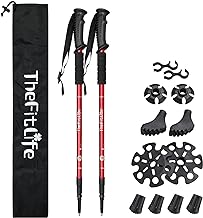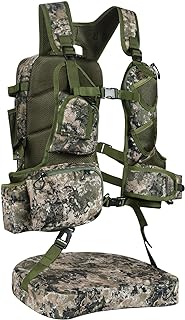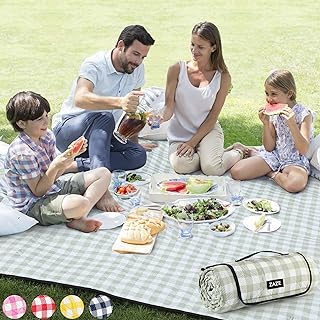When it comes to bushcraft, having a good knife is super important. It can really help you out in the wild. Choosing the right bushcraft knife means thinking about different things to make sure it fits your needs. Things like what the blade is made of, how it’s designed, how the handle feels, and how durable it is all make a big difference in how well the knife works for you outdoors. In this article, we’ll talk about the most important things to think about when picking a bushcraft knife. This will help you make a smart choice that fits what you like and what you do outside.
See our guide to the best bushcraft knives.
Blade material
When choosing a bushcraft knife, the type of blade material is an important decision to consider. If you value toughness and long-lasting sharpness in the wild, high-carbon steel blades are a great option. These blades are strong and can keep their edge sharp even with heavy use. They are also easy to sharpen and reliable in different weather conditions, making them a solid choice for outdoor enthusiasts who need a durable tool for wilderness exploration.
On the other hand, if you want a blade that is resistant to rust and requires less maintenance, stainless steel blades are a good choice. While stainless steel may not be as hard as high-carbon steel, it can withstand corrosion and staining, making it ideal for those who spend time in wet or marine environments. With minimal upkeep, your bushcraft knife will stay in good shape with little effort, providing a hassle-free outdoor experience without sacrificing performance. Ultimately, the decision between high-carbon steel and stainless steel blades depends on your specific needs and preferences, with each option offering unique benefits for different wilderness situations.
Blade design and shape
When selecting a bushcraft knife, the design and shape of the blade are very important. The right blade can make a big difference in how well the knife works for you in the wild. A drop point blade design is versatile, allowing you to pierce things while also being strong enough for tough cutting jobs. The curve of the blade’s spine leads to a sharp point, which is great for precise work and durability.
Choosing a Scandinavian grind blade not only improves cutting performance but also makes sharpening easier when you’re out in the field. This blade design is great for carving and is popular among bushcraft enthusiasts who enjoy detailed woodwork. The flat part of the blade is good for controlled slicing, while the fine point is great for delicate tasks. The design and shape of the blade are really important in how well your bushcraft knife works for you, affecting how easily you can handle different tasks and environments with a reliable cutting tool by your side.
Handle material and ergonomics
When you’re looking for a bushcraft knife, it’s important to think about the handle as much as you do the blade. A good handle is comfortable, provides a good grip, and is crucial for the knife’s overall strength and performance. Whether you choose wood, Micarta, G-10, or rubber, each material has its own benefits that cater to different preferences and needs. Traditional wood handles have a classic look and feel, while newer materials like Micarta and G-10 are super strong and hold up well in tough outdoor conditions. It’s also important to consider how the handle feels in your hand – a well-designed grip can help prevent hand fatigue and give you better control when doing detailed tasks. Overall, the handle material and design should work together to make the knife feel like a natural extension of your hand, making it comfortable and effective for all your outdoor adventures.
Don’t overlook the importance of the handle when choosing a bushcraft knife. Even if the blade is sharp, a poorly made or uncomfortable handle can ruin your knife experience. It’s essential to choose a handle material that is durable, weather-resistant, and feels good in your hand. Whether you like the look of natural wood or the strength of synthetic materials, focusing on comfort and functionality in the handle can make your bushcraft activities even more enjoyable. By carefully considering the handle material and design of a knife, you’re not just getting a useful tool – you’re getting a reliable companion for all your outdoor trips that will last a long time and provide comfort and support.
Tang construction
When choosing a bushcraft knife, it’s important to focus on durability and reliability for outdoor use. A full Tang design, where the metal runs through the whole handle, gives the knife maximum strength for tough activities in the wild. This design is a must-have for serious bushcraft fans. The strong connection between the blade and handle in a full Tang knife allows for precise cutting, carving, and chopping in challenging areas. Choosing a full Tang knife boosts performance and gives confidence in its durability, so users can explore nature without worrying about gear breaking.
On the other hand, knives with partial Tang designs may not be as strong or sturdy as full Tang ones, which could be a problem in tough outdoor situations. Although partial Tang knives might be lighter, they might not hold up as well during long-term use in the wild. In survival situations where tools are essential, having a full Tang bushcraft knife shows a commitment to safety and being ready. The strength and reliability of a full Tang knife not only improve its function but also show a dedication to facing nature’s challenges with resilience.
Sheath quality and carry options
When you buy a bushcraft knife, it’s important to think about the quality of the sheath and how you will carry it. A good sheath not only keeps your knife safe but also makes it easy to reach when you’re outdoors. Choosing a high-quality leather or Kydex sheath can make a big difference in how well your knife works for you. It’s also important to consider how you will carry the knife, whether you prefer belt loops or MOLLE attachments, for your comfort and convenience during outdoor activities.
The quality of the sheath and how you carry your knife can make a big difference in how useful it is. Having a reliable sheath that fits your preferences can make using the knife easier and safer in different situations. Whether you like a traditional leather sheath or a more modern Kydex one, focusing on these aspects when you choose a bushcraft knife can enhance your outdoor experiences.
Conclusion
In today’s world of modern technology, bushcraft knives hold a special significance beyond just being tools. They represent a deep connection to nature, human creativity, and our instinct to survive. These knives are essential for tasks like carving wood and starting fires, making them vital companions for those who seek adventure and self-sufficiency. Each knife not only carries the weight of its steel but also a legacy of craftsmanship passed down through the generations. As we face new challenges, the essence of a bushcraft knife remains constant – a symbol of resilience, adaptability, and a strong commitment to the adventurous spirit within each of us. Want more info on alarm clock, check the best alarm clock.


